Horizon Forbidden West Review
Violence and technology - not good bedfellows
Third-person action adventures seem to be the go-to design for modern triple-A games. The first game introduces the new IP, and the sequels follow up by usually adding more RPG elements and further expanding the world. The Horizon franchise seems to be following this trajectory, after its debut in 2017 with Zero Dawn as a refreshing action title from Guerrilla, who were previously best known for their shooters. The unique world, a surprisingly strong central sci-fi narrative and exciting, yet strategic combat helped elevate the game to success. Five years later, the newly released sequel Horizon Forbidden West builds on this foundation, while making only minor changes to the formula.
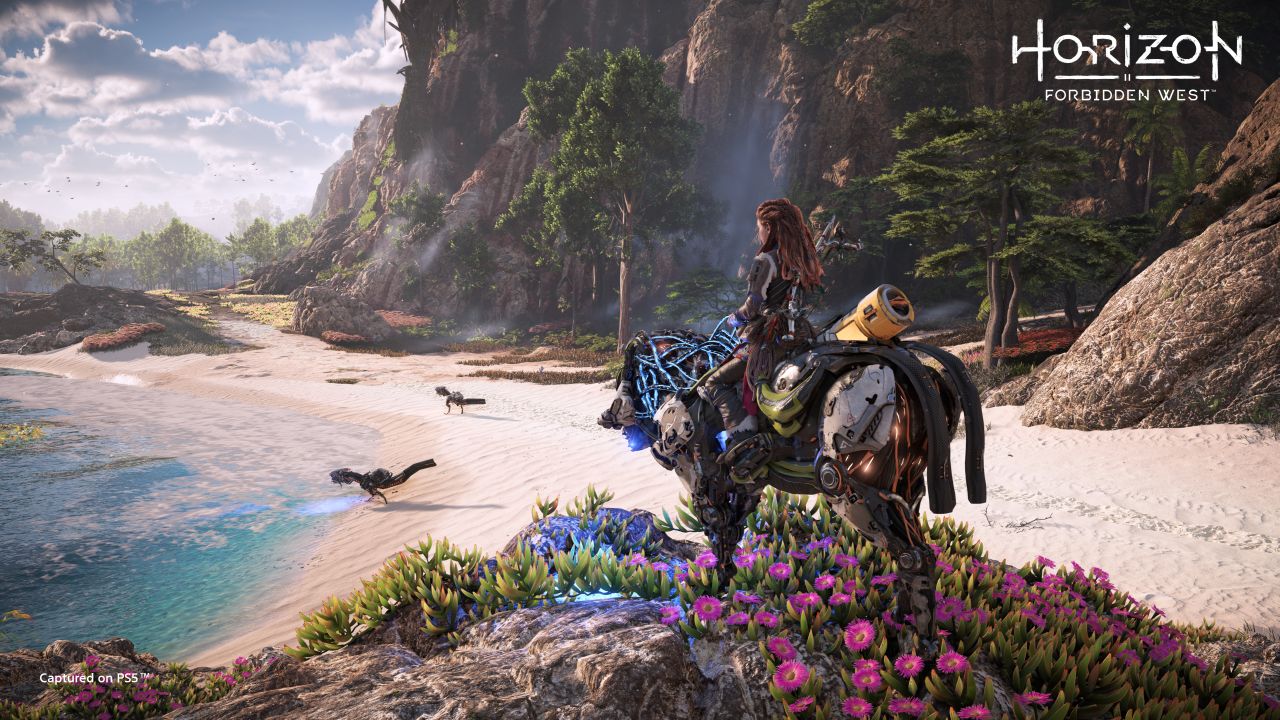
The story of Forbidden West picks up about six months after Horizon Zero Dawn (spoiler warning!). In this unique post-apocalyptic world, where humans have gone back to the tribal civilization stage and mechanical machines dot the landscape, protagonist Aloy is an independent outcast who possesses a Focus device that lets her see and experience data that others cannot, as well as interact with the machines. Having stopped the rogue function HADES from creating machines trying to destroy the world, previously part of GAIA's world-creating system, Aloy thought she was in the clear. However, her companion Sylens turned out to be withholding information, and actually captured the remains of the HADES function. When Forbidden West picks up, Aloy is on the hunt for Sylens and the remaining parts of HADES to finish it off for good, as well as looking for a backup of GAIA, as the world still seems to be dying.
After pursuing her final lead, she manages to recover a backup copy of GAIA, however it needs at least a few subordinate functions to work – terraforming, water and air creation, and so on. A few of these functions are scattered in the region known as the Forbidden West, so Aloy sets out to recover them. On her journey, she will interact with the local tribes who are in the midst of their own conflicts, meet old and new companions, and encounter a dangerous human group. These humans have impenetrable shields, and are believed to be connected to a Far Zenith colony ship, which was sent into outer space a century ago to try and escape the inevitable Earth destruction. They seem to have their own plans, and even have their own version of Aloy.
The main narrative of Forbidden West continues to be a highlight. It's not easy to weave an interesting and engaging story in a video game, let alone a sci-fi one, but the sequel manages to pull it off. It expands the universe of the game, both literally and figuratively, while staying grounded thanks to Aloy's sensibilities. Both her and the supporting cast make for an enjoyable group of characters, and the interesting directions that the story takes should keep players involved, despite its notable length. There are also a few memorable and very enjoyable moments, both in story and gameplay, that again few other triple-A games usually manage to deliver.
As good as the narrative is, there are some pitfalls. For one, Aloy's character arc seems like a copy of the original game. For some reason, she sets out on her own in Forbidden West and acts as a forgotten outcast, despite the strong friendships forged in Zero Dawn. Even her previous companions are confused as to why she had a change of heart, and has to warm up to them again. On the other hand, Aloy herself seems more self-assured and focused on the mission than ever, with few rookie jitters to speak of. Still, the story fails to explain why she has to start from scratch when learning her skills and abilities, and equipment. The ending is also a bit disappointing – things don't get wrapped up as neatly as in the first game, and instead the focus shifts to a looming huge new threat, which apparently the next game will focus on. It's one thing to tease a sequel as Zero Dawn did, but the setup of the next chapter is the crux of the conclusion in Forbidden West.
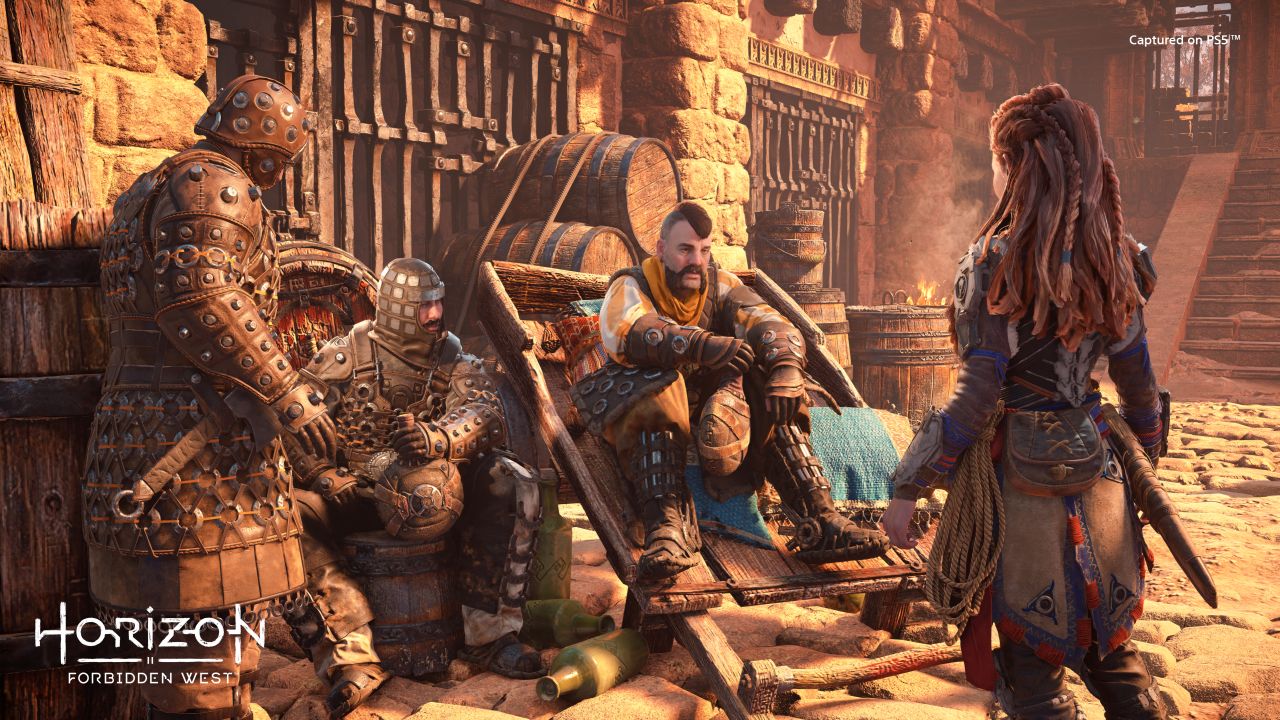
The main narrative also lacks urgency – the vast majority of the game world looks full of life and color, so the idea that the world is apparently dying has little bearing on what Aloy experiences. That's perhaps a good thing, as there will be plenty of things trying to distract you from the main story quests. As you explore this open world, you'll come across a variety of settlements, each with their own NPCs and side-quests. The side quests are more numerous, but are still fairly generic in nature – you'll help people recover lost items/friends, defeat specific groups of machines, investigate crime scenes by following clues, and so on. All of these quests are quite predictable and could be easily transplanted from any other modern open world RPG. It's all solid and polished content, and gives players reasons to explore the corners of the map and fight some more machines, but only a select few – like one where you have to restart the water supply for a village by following the scans of a pipe underground – are memorable, multi-stage, and take advantage of the unique setting.
And the world is indeed quite beautiful. Players will traverse the temperate climate hills and valleys, journey up snowy mountains, cross a desert, descend into dense forest, and explore a washed out island. These settings are fairly typical for a modern open world game, but that isn't to say the game doesn't take advantage of the settings – such as a highly memorable sequence in the desert, that we won't spoil here. The scenery is always lush with color and offers varied terrain types, and with the added ability of Aloy to explore underwater and the return of the day/night cycle, it's a world that's easy to get immersed in. You'll also occasionally delve into the Cauldrons again, the sci-fi underground facilities that manufacture the machines, that switch up the setting. The exploration is supported by an improved soundtrack that produces a few very good beats and themes beyond just the main track that the original game was best known for.
The characters you encounter and Aloy herself are excellently animated in cutscenes. From the main story missions to the random side quests, everything is polished to deliver maximum narrative content. And that in itself is a bit of a drawback. While the main story scenes are all quite good, the optional stuff is less engaging. While still very well animated and crafted, the game suffers a bit from too much needless script. Every optional quest has NPCs delivering their life story to Aloy, who essentially responds with "I'll check it out if I am in the area". There are hours upon hours of optional dialogue, even for minor side quests, and while that level of deep lore and detail is admirable – with solid voice acting across all characters - it makes for some very boring and overextended dialogue that is crying out to be skipped. It's a borderline Metal Gear Solid experience in how much trimming of dialogue is needed. And in-game, Aloy talks to herself non-stop. She recaps every story beat, every immediate situation, every puzzle action – literally solving it for the player before you even had a chance to orient the camera. And it’s not like the players need the extra help - as with most modern games, the missions and quests are all linear affairs, with nary a step sideways towards a hidden chest with materials. And yet, there is even an optional guided mode that will place detailed checkpoints for you to follow, if you truly want an easy experience.
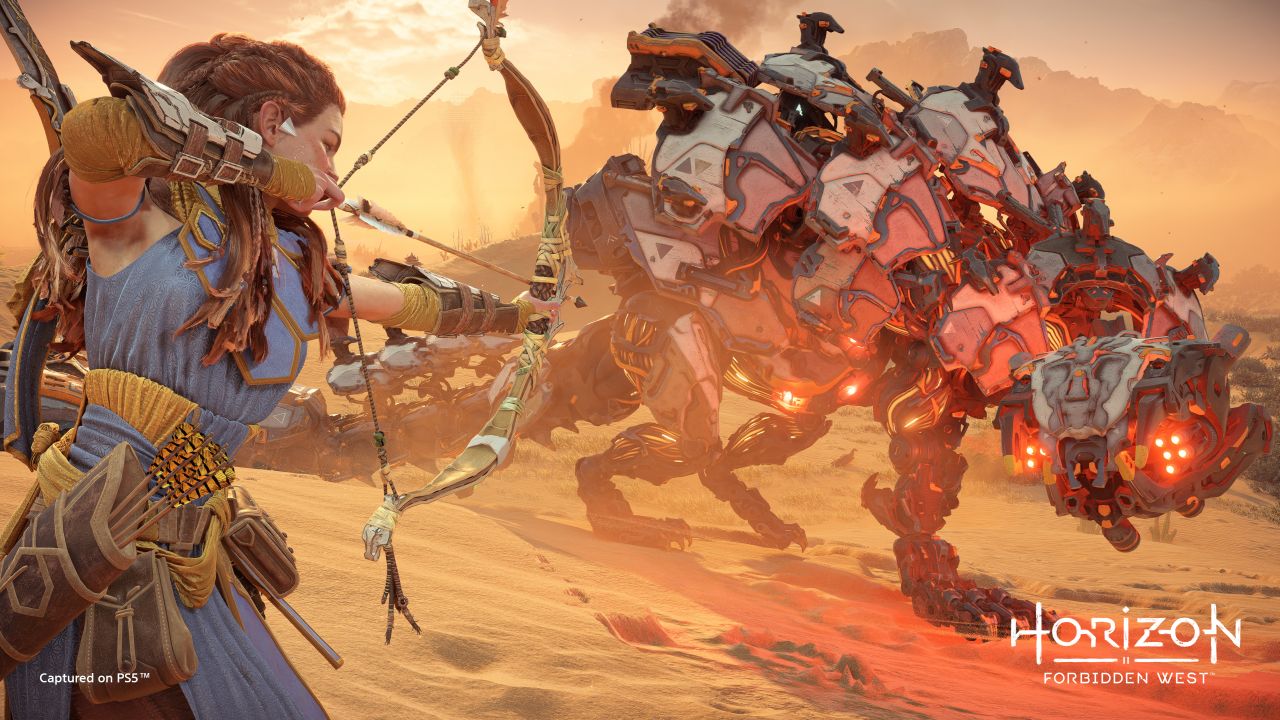
In gameplay, not much has changed in Forbidden West. Once again with the use of her Focus (which apparently stopped being a rare commodity, as seemingly everyone gets one now), Aloy can highlight things in the environment with a quick pulse, or enter a special vision mode to identify items in more detail. A pulse highlights items that you can pick up, plants that can be gathered, and surfaces / ledges that are climbable. Platforming remains an iffy mechanic – you can only climb surfaces as designated by the developers, while other walls that look exactly the same are totally non interactive. Climbing feels imprecise and often prone to error, even in linear sections. Aloy has no issue with simply running off the cliff, without so much as a pause.
You get a couple of new tools in the sequel, but they just remind you of other games such as Tomb Raider. There's a glider you get early on, which is neat and speeds up descents, and yet you can’t use it as a shield like the enemies do. You get a grapple hook, too, but it's only usable on special grapple points and to remove panels off ducts in puzzle sections. Puzzles introduce a very unnecessary and annoying (but thankfully rare) mechanic where you must manually input a code into a console; unlike most games where it would be pre-filled if you found the correct clue, you must manually sift through the endless notes you've gathered and their walls of text, to find the code. With story progress, Aloy also gets some upgrades to her spear that let you get past two different types of terrain obstacles, and an ability to breathe underwater indefinitely, so you can return to some earlier spots that may have been inaccessible previously. While there are steps in Forbidden West to expand the mechanics of puzzles and exploration, and the underwater exploration is enjoyable, the rest of the new mechanics have minimal function and are just lifted from other games.
On your adventures you'll encounter plenty of enemies, both human and machine. Stealth remains largely unchanged – there are still tall patches of grass to hide in, and instant-kill stealth takedowns are a nice way to clear out the area. Aloy can throw a rock to attract attention, and override machines to temporarily make them friendly - or use them as a mount. There's one in particular that offers quite an exciting moment, so we won't spoil it here. Smoke bombs help you disappear in case of alerts, and using your Focus allows you to tag enemies and their paths, to plan your movements. The Focus lets you tag everything through walls, before you even enter the area, which seems like an overpowered mechanic and makes infiltrations quite trivial.
But even the best laid plans can get spoiled by inconsistent AI, or the fact that there is no ledge takedown on enemies above you, and to make matters worse they actually just spot you instead. So you'll have to get into combat often, which remains the bread and butter of Horizon. Aloy will dodge and roll her way through numerous exciting and often unpredictable encounters with the machines, while using a variety of weapons and ammo types. Many of the machines return from the previous game, while being joined by new ones; they are all still mostly modeled after real animals, and vary greatly in size, from small Burrowers and Scrappers to the hulking Thunderjaws and Tremortusks. There are many machines, and even different elemental sub-types, to contend with. Aloy can scan the machines to reveal their elemental weaknesses as well as components. Targeting these components changes the course of battle as you remove attack capabilities of the enemy, and/or create valuable salvage to gather post-battle. Fighting humans is very straightforward and dull by comparison - though at least some of them have also learned to ride machines.
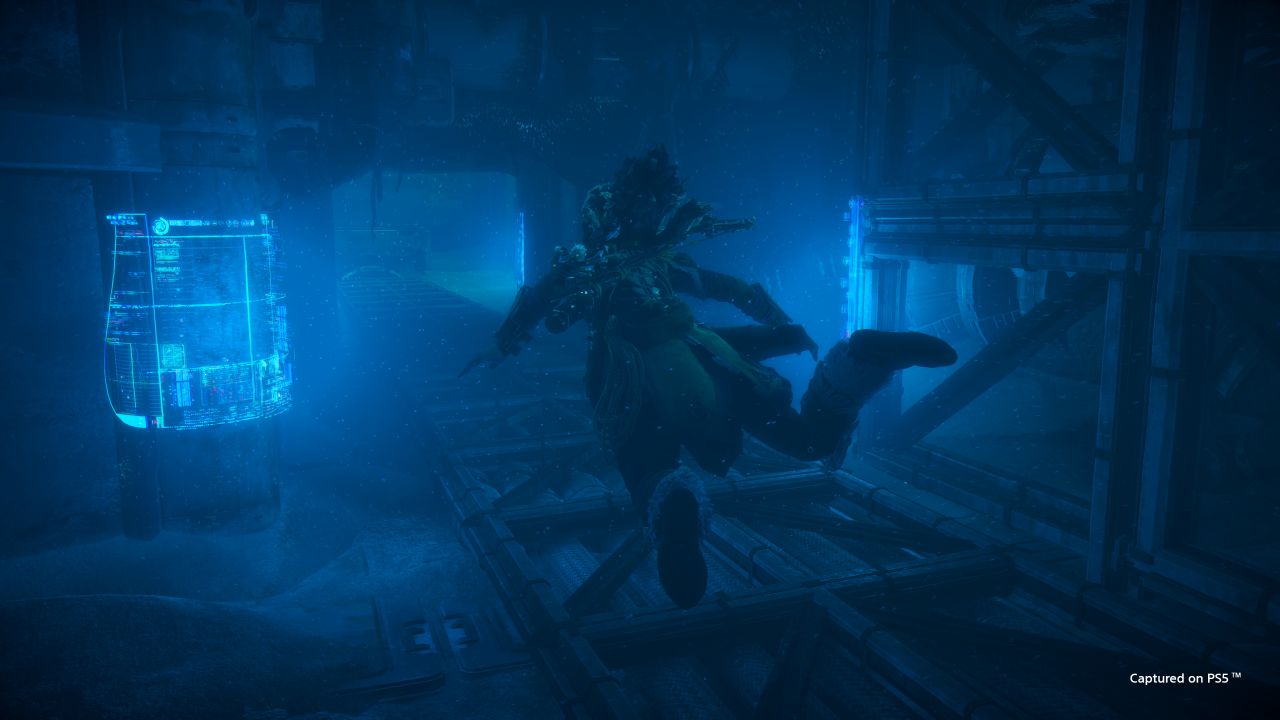
The small to medium machines continuously pounce towards Aloy and occasionally use a variety of devastating close and far-range attacks, so constantly staying on the move is key. The battles are almost always hectic, and things only switch up when you fight the larger machines that are less mobile – but instead deliver constant deadly barrages. While you do have a spear, and there are some melee combos to unlock, fighting up close is always an unnecessary risk as you get stun-locked into animations and killed in mere moments. You also never feel like you're doing any significant damage in melee, unless you happen to knock over a machine and can perform a special strike. You'll go through your healing herb resources mighty quick if you insist on spamming attacks up close, as the enemies throw Aloy around and knock her down.
So for the most part, you'll stay ranged, using a variety of new and returning weapons to dish out damage. From different types of bows, to ropecasters and tripcasters, you can pepper the enemy with damage, but also slow down time to target vulnerable spots and components. Ammo can be crafted on the go (if you have the resources), and again this has a variety of elements, from poison to acid and fire. Using the special ammo is key, as otherwise you are not doing enough damage to make worthwhile progress. One new ammo type is a yellow slowing glue, which tries to help contain the majority of mechs that love to jump around like crazy and spam their attacks at breakneck speed. Also new are the spears, which are another type of throwable weapon. Another new mechanic is a Valor system, which is a basic combat meter that, once filled, lets you activate a special ability, such as increased damage or health regeneration. Further, some areas feature hazards that Aloy can trigger, such as rocks propped up on a wall or wood beams hanging overhead, that can deal a little extra damage to machines below. The combat in Forbidden West remains highly dynamic and enjoyable at its core, while like with exploration, the new additions expand your options but ultimately don't make a world of difference.
Hunting machines is not only for the sport or the fun of it, but also to gather their materials, which you need to improve the weapons and equipment, which are initially bought from vendors. Not much has changed here from Zero Dawn; machines have their own components, and you need certain ones to upgrade the weapon or armor set of your choice, so you'll set out to their grazing locations. There are many different armors and weapons available to get from vendors or as rewards from quests, and you can sell all the valuables you find for Scrap (the game's currency). As before, you should have more than enough cash flow, and will need to focus on finding rare machine parts instead. As you run around you will also collect healing herbs, as well as other natural materials, which may be used in upgrades or with the newly added Cooking vendors, who will exchange them for food items that give you temporary boosts. Managing your inventory and materials is very convenient - whatever Aloy can't carry is sent to the stash, so you never worry about losing out on loot during adventures. Further, many campfires dot the landscape, allowing for fast travel.
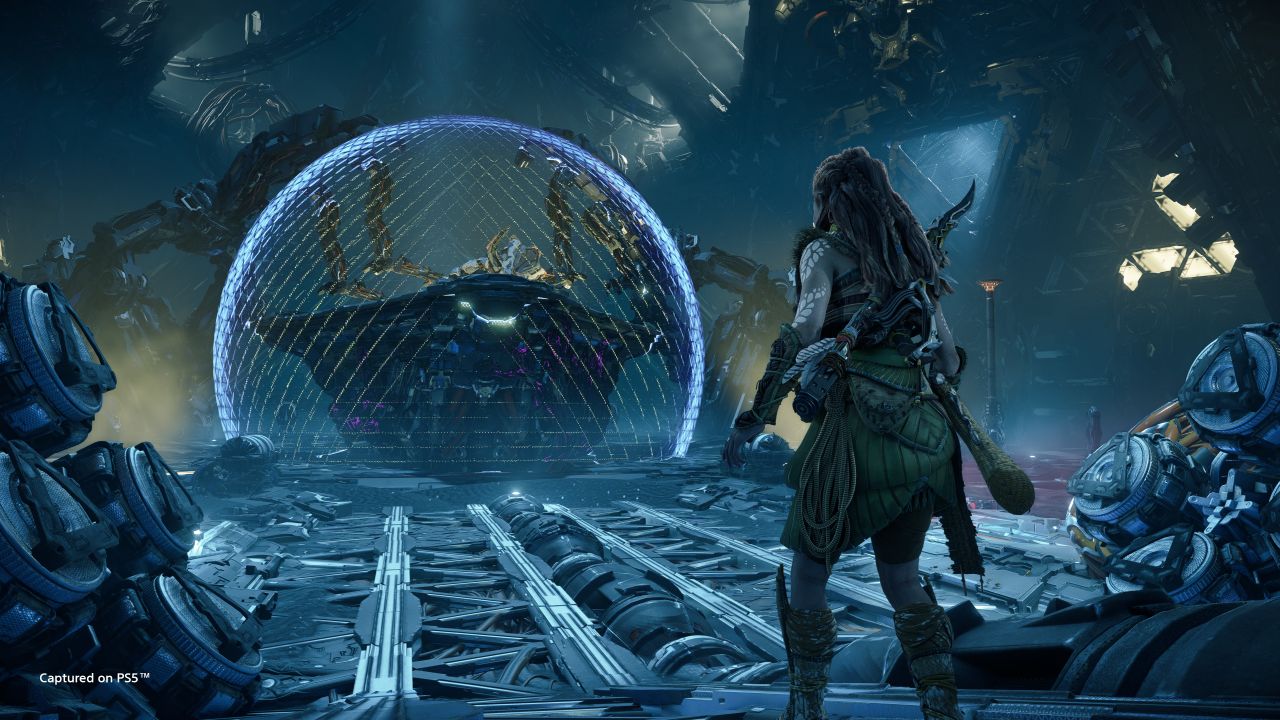
Everything you do grants experience, which levels up Aloy and earns points to spend in one of five skill trees, with some focusing on stealth and others on combat. Each tree has a few alternative paths, but they are fairly short, and contain either passive bonuses or new attacks for different weapons. However this leaves two trees without much use – one that focuses on traps, and the other on overriding machines. Their benefits are so situational, you are unlikely to want to invest any points there, unless you play in an extremely specific way. All quests have a recommended level, but your gear has as much value as your unlocked abilities. The leveling progress is well balanced, and just by doing a few side quests and some exploring you should have no problems keeping up with the main story requirements. You could try to climb all the Tallnecks, which are an enjoyable puzzle in itself, to reveal the map. There are enemy camps to clear and collectibles to find. Forbidden West is a longer game than Zero Dawn, clocking in at about 32 hours, with many more added if you choose to listen to every piece of optional side quest dialogue.
Although Forbidden West is undoubtedly a visual showcase on the PlayStation 5, it's still a game that’s also out on PS4, so the scope remains fairly contained. Still, on PS5 it looks very good with sharp and detailed textures, and excellent cutscene dialog animations. PS5 players can choose between two different visual modes, one offering better visuals but lower framerate, while the other holding a steady 60FPS at the cost of some visual flair. The loading times are very quick, and the DualSense has a variety of rumbles and trigger resistance effects that correlate to the action.
Though it performs well, the game is not without occasional issues. We encountered a variety of bugs: both Aloy and her enemies fell through the world or clipped into it, the physics system randomly malfunctioned, and it was impossible to escape the aggro of some enemies without totally leaving the area. Thankfully, there are frequent autosaves that make these issues fairly minor. Presentation blemishes also exist – from random screen flashes and fading to black, to Aloy's crazy hair effects. There are cases with two music tracks playing at the same time, idle NPC conversations sounding like they are echoes underground, and some combat animations – such as stealth takedowns – look generic and imprecise, seemingly just imported from the previous game.
Horizon Forbidden West is a solid follow up to an already enjoyable original IP. Everything that worked before still feels exciting - the expansive open world, the diverse and high intensity combat, and the great writing and characters. As a sequel, it may not add much - its new mechanics are largely basic implementations of ideas from any other modern action game, or they simply expand on what was in the last game. Still, thanks to the very solid foundation of exciting combat and yet another good main story, it's a gratifying continuation for the franchise.
 Comments
Comments


















